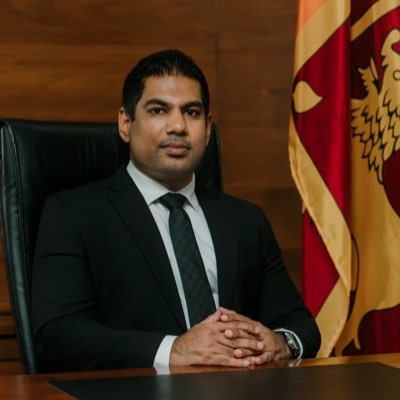The tariff hike is likely to generate revenue of around LKR 287 billion in the cash-strapped nation…reports Asian Lite News
Sri Lankan Power and Energy Minister Kanchana Wijesekera has assured that no power cuts will be enforced from Thursday (February 16) onwards, local media reported.
His remark comes just a day after the island nation hiked the power tariff by 66 per cent, Daily Mirror reported.
Addressing a press conference, Kanchana said President Ranil Wickremesinghe has advised him to ensure uninterrupted power supply with the imposition of the new tariffs.
Wickremsinghe also asked officers concerned to provide concessions for low-income families and solar rooftop systems for religious places and government educational institutions.
The tariff hike is likely to generate revenue of around LKR 287 billion in the cash-strapped nation.

Concessions for low-income families
Amid the major power tariff hike imposed, Sri Lanka President Ranil Wickremesinghe has instructed to provide concessions for low-income families and solar rooftop systems for religious places and government educational institutions using an Indian credit line of $100 million.
President Wickremesinghe has issued a directive to the Power and Energy Minister and the state-run power supplier, Ceylon Electricity Board (CEB) to provide concessions to low-income groups against the major tariff hike for electricity.
He also has instructed to provide solar rooftop systems for the places of religious worship, state-run schools and vocational training centres using a $100 million Line of Credit (LOC) from India.
The CEB as the licensee had requested for a revision of electricity tariff in January, but the Public Utilities Commission of Sri Lanka (PUCSL) had opposed it until last Wednesday. While the PUCSL chairman opposed the proposal, majority members had approved the tariff hike by 66 per cent. The power tariff hike is one of the conditions of the International Monetary Fund (IMF) to provide a $2.9 billion bailout package to help the worst ever financial crisis faced by the Indian Ocean Island.
The decision to increase tariff has helped Sri Lanka to move closer to getting the IMF bailout, Power and Energy Minister Kanchana Wijesekera told the media.
In September, the IMF announced a $2.9 billion bailout to Sri Lanka over a four-year period to help the crisis-ridden economy with the condition that the country should raise taxes, stop subsidies and slash public sector debt.
With the tariff increase, President Wickremesinghe has directed to provide continuous power supply. Unable to obtain fuel for power generation, Sri Lanka started power cuts in January 2022, and it was against this decision of the Gotabaya Rajapaska led government that led to mass protests in March (2022). Continuous and intense protests toppled the Rajapaksa government forcing him to flee the country and making way for Wickremesinghe to take over.
Coming to Sri Lanka’s rescue, India has provided nearly $4 billion financial assistance, including LOCs from January last year to obtain food, fuel, medicine and other essentials. Being a major creditor, India also assured the IMF to help Sri Lanka’s debt restructuring plan. (with inputs from Susitha Fernando)

